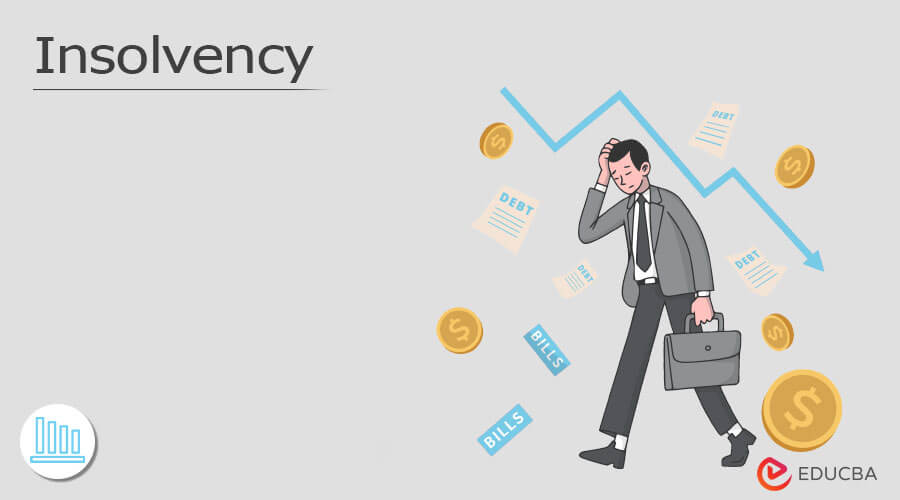4 Simple Techniques For Insolvency Practitioner
4 Simple Techniques For Insolvency Practitioner
Blog Article
Everything about Insolvency Practitioner
Table of ContentsUnknown Facts About Insolvency PractitionerThe 10-Minute Rule for Insolvency PractitionerInsolvency Practitioner for DummiesA Biased View of Insolvency PractitionerOur Insolvency Practitioner IdeasThe Single Strategy To Use For Insolvency PractitionerFascination About Insolvency Practitioner
Bankruptcy is when liabilities are higher than the worth of the company, or when a debtor can not pay the debts they owe. A company can become financially troubled due to a variety of situations that result in poor capital. When faced with bankruptcy, a company or person can call lenders directly and restructure financial debts to pay them off.Bankruptcy can result in insolvency process, in which lawsuit will certainly be taken against the bankrupt individual or entity, and possessions may be sold off to repay exceptional financial debts. Company owner might speak to lenders straight and restructure financial obligations right into more workable installments. Lenders are commonly open to this strategy because they intend to be settled and avoid losses, also if the settlement gets on a delayed routine.
The 9-Minute Rule for Insolvency Practitioner
The proprietor develops a proposition outlining just how the financial obligation may be reorganized using cost reductions or other plans for support. The proposition shows financial institutions exactly how the organization may generate sufficient capital for profitable operations while paying its financial obligations. Commonly, a forgiven financial debt might be taken into consideration revenue by the Irs (IRS).

Insolvency Practitioner Things To Know Before You Buy
Business might wind up paying big quantities of cash in problems and be incapable to continue operations. When procedures discontinue, so does the company's earnings. Lack of income leads to unsettled costs and lenders requesting cash owed to them. Some companies become financially troubled since their products or services do not advance to fit customers' transforming needs.
Expenses exceed profits and expenses remain unpaid. Types of bankruptcy include cash-flow bankruptcy and balance-sheet insolvency. Cash-flow bankruptcy happens when a company has the properties to cover their debts however they remain in the incorrect kind, such as realty as opposed to liquid funds. Balance-sheet insolvency, on the various other hand, indicates an absence of assets in any type of kind to cover financial obligations.
The internal revenue service states that a person is bankrupt when the complete responsibilities exceed total assets. A insolvency, on the other hand, is an actual court order that depicts how a bankrupt individual or business will certainly settle their creditors, or exactly how they will certainly sell their possessions in order to make the settlements.
Insolvency Practitioner Fundamentals Explained
:max_bytes(150000):strip_icc()/Liquidation-4193561-Final-699e67d885c243c39cac2985b16d51cb.jpg)
Financial debt combination is when you combine multiple fundings into one new car loan, usually to accomplish much better terms. Insolvency is not the same as insolvency, although a business that has actually ended up being insolvent might submit for insolvency. Insolvency is the state of not having the ability to pay your responsibilities while insolvency is a lawful process to release your financial obligations.
Comprehending the elements that can bring about insolvency, such as overspending, can aid you stop bankruptcy and its consequences.
Our Insolvency Practitioner Ideas
It is popular that supervisors and police officers of firms (and managers of limited liability business) owe fiduciary duties to their companies and their investors (or members). These fiduciary responsibilities Click Here are specified by state laws and, though there are variations from one state to another, they generally consist of a task of loyalty and a responsibility of care.
The task of treatment needs supervisors and officers to work out diligence, to make educated decisions, and to act in excellent belief so that their activities remain in the very best rate of interest of the business. Though beyond the scope of this discussion, some states allow these responsibilities to be restricted either by so keeping in mind in the business papers or abiding by other needs.
The 6-Minute Rule for Insolvency Practitioner
The majority of states specify insolvency in 2 ways( 1) when a firm's liabilities come to be higher than the amount of its properties or (2) when the business becomes incapable to pay its financial debts as they end up being dueand accept both meanings (Insolvency Practitioner). The change in obligations occurs because when a business is insolvent, there is no value in the business beyond that owed to the firm's financial institutions to ensure that the equity holders no longer have an economic stake in the firm
Beware concerning giving investors preferential therapy at the expense of creditors (e.g., authorizing and moneying a dividend or a stock redemption). Be careful concerning advantageous therapy in between courses of investors. Clear up initiatives to discover all the facts prior to taking a certain strategy; supervisors should really think that any type of choices made remain in the finest interests of the corporation in its entirety (i.e., decisions will certainly be evaluated in hindsight because of the effect of such activities on moved here the firm).
In any type of insolvency or insolvency proceeding, settlements made to specific financial institutions at the cost of other creditors can be clawed back, particularly if there is some connection in between the business and the creditor. Think about recommending at a yearly stockholder meeting (or any other meeting of stockholders) a resolution affirming that all previous organization decisions and activities taken by the directors and officers of the firm were absorbed excellent belief after an exercise of reasonable care.
The 45-Second Trick For Insolvency Practitioner
Fully disclose any type of personal or company partnerships with events beyond of deals entailing the firm to avoid the appearance of a dispute of interest. In examining prospective fund raising deals or a sale of assets of the distressed firm, understand that these transactions might be inspected later on in light of any type of subsequent growth of directors' fiduciary tasks to include financial institutions.
Report this page